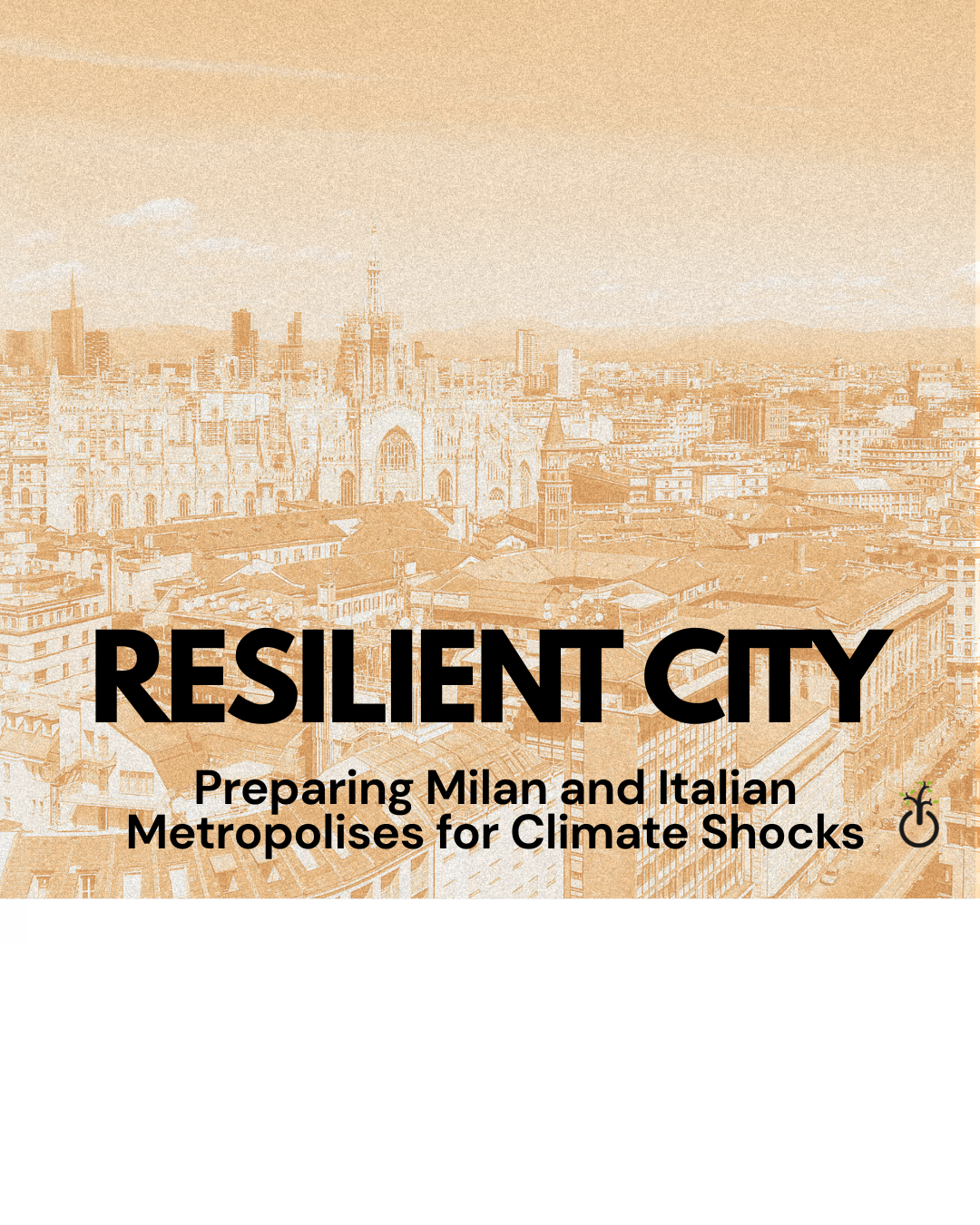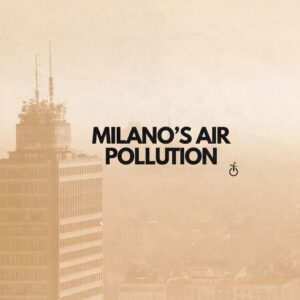Italian cities are entering a historic moment in which extreme events, ranging from extended heat waves to heavy rains and recurring floods, are no longer exceptions but structural features of the urban climate. Milan, due to its size, density, and economic role, is a privileged laboratory for adaptation. The question is not whether climate shocks will occur, but how much we can do to mitigate their damage to health, society, and the economy. Regional planning documents and the results of national studies all agree on one thing: we need to better integrate mitigation, adaptation, and regional governance, combining measurable, scalable, and socially fair measures.
Milan has a strategic framework that outlines the consequences of the climate emergency and the prospects for climate neutrality by 2050, which includes guidelines specifically focused on limiting temperature rise. The city’s Air and Climate Plan identifies cross-cutting actions in the areas of energy, mobility, green spaces, and soil, integrating them with operational adaptation guidelines that can be transformed into sectoral projects and tender specifications. This would form the basis for the transition from the planning phase to the implementation of actions in sectoral plans, a necessary step towards measurable resilience.
The Milan metropolitan area has a long history of flooding events caused by northern waterways, including the Seveso River. In recent years, a series of flood reduction projects have been initiated, including a basin located in Milan that is part of the upstream system. The reservoir was the first measure to be completed and is part of a broader flood risk management plan. Technical and extension sources indicate that the Parco Nord reservoir has a capacity in the order of hundreds of thousands of cubic meters, which refers to its ability to mitigate flood waves that cause urban flooding. The associated costs demonstrate that ‘gray’ solutions are necessary, but must be integrated with nature-based planning. The other aspect of urban vulnerability is heat, which poses a risk to health even more than to infrastructure. National and regional public health institutions manage warning and communication systems, including daily health bulletins during the summer season, and assess thermo-hygrometric stress. For Lombardy, ARPA’s Humidex service actually provides operational guidance for days of high heat stress while the Ministry of Health manages information for the cities it monitors. Recent literature also highlights the need for Italian cities to plan for longer and more frequent heatwaves, integrating mitigation and adaptation to contain their most severe impacts.
These pressures call for climate-sensitive urban planning that can mitigate peaks, redistribute risk, and protect the most vulnerable. A key area of intervention is stormwater management through sustainable urban drainage approaches. Milan and other cities can extend ‘sponge city’ systems by adopting green and blue solutions: permeable soils, drainage channels, rain gardens, green roofs, and phytoremediation gardens, all connected to existing networks. Large-scale flood control works will continue to play a key role along river courses; however, neighborhood-level actions to reduce immediate water passage will alleviate pressure on drainage systems during intense convective rainfall. The frequency and intensity of extreme events in the Po basin are now addressed with high-resolution simulations.
A second priority area concerns the urban heat island. Structural measures include anything from increasing urban green cover through street trees, linear parks and ecological corridors to promote shade and ventilation. They also involve the use of high-reflectance materials for roofs and pavements with color and texture criteria that limit solar absorption, and further promoting green roofs and facades, which simultaneously improve microclimate conditions and act as retention systems for stormwater. Municipal plans already contain measures related to the prevention of urban warming, with the expected outcomes of reducing peak temperatures in the neighborhood and lowering overall summer energy consumption. These strategies must be paired with active protection of vulnerable populations through heatwave plans, accessible cooling spaces and neighborhood-based services during alerts.
Resilience, however, is not just a question of infrastructure, as aspects relating to information and decision-making that influence response times also come into play. Furthermore, access to historical climate data and operational bulletins allows Milan, health authorities, operators, and citizens to plan ahead for the most critical days. Close observation and monitoring of weather and climate conditions at the urban level, with the help of stations such as the historic Milan Brera station and the regional service, provides a starting point for calibrating thresholds, seasonality, and the priority of interventions. The integration of these observations and monitoring data into civil protection systems and local emergency plans can activate a timely response capacity and reduce the time between a report and the start of interventions.
At the national level, hydrogeological risk analysis will have to take into account more rigorous land management. The latest ISPRA report reviews the risks of flooding and landslides in the Hydrogeological Structure Plans, highlighting the risks in many Italian municipalities and the need for integrated planning between the various local authorities. This includes coordinating urban development with risk reduction objectives, which for metropolitan areas such as Milan means minimizing the absorption capacity of the land, creating functional buffer zones, reopening or renaturalizing watercourses where possible, and improving hydraulic assessment criteria in the planning of new developments and new infrastructure. Financial planning is also part of the strategy, which includes multi-year investment programs and prevention tools.
Milan can also draw on comparative analyses of Italian cities, developed by research centers such as the CMCC, to fully support its adaptation efforts. Recent urban-scale studies have adopted models that enable the creation of very high-resolution scenarios that help identify vulnerabilities and test adaptation options; the distribution of extreme precipitation and the evolution of tropical nights are two key variables for public health and building energy management. Together, they can be used to develop adaptation strategies and are particularly useful when used to plan specific, tailored interventions that address heat vulnerability. Combining these approaches can reduce the risks of climate actions that take a “one-size-fits-all” approach and may lead to ineffective measures.
A resilient city must also be a “fair” city. Heat waves do not have the same impact on all city dwellers: neighborhoods with less green space, homes exposed to the sun without protection, elderly people living alone, or people with chronic illnesses are examples of situations where the effects are amplified. The adaptation process therefore also requires information on socio-health vulnerabilities so that priorities and investments can be directed towards vulnerable populations. This could include creating climatologically comfortable (in terms of temperature) public spaces, providing shade at public transport stops, offering incentives for the renovation of residential buildings, and providing timely information and alerts on risk levels. Collaboration with health and social services, which are part of the national alert system, can help identify useful strategies to support at-risk groups during the most critical episodes.
For Italian cities, the path forward is now clear: air and climate policies must be closely linked to those on water, soil, mobility, energy, and health. To guide this transition, it is essential to move from generic measures to targeted interventions, supported by high-resolution maps and scenarios. At the same time, widespread resilience must be promoted through building and urban planning standards that favor the presence of shading elements, permeability, and vegetation that is not only decorative but truly functional. In addition to large-scale hydraulic works, local containment techniques must also be enhanced to help reduce runoff. Warning systems and communication with citizens will also play a key role, acting as ‘soft’ protection infrastructure. Milan has already begun to translate this program into concrete actions, but for the process to be truly effective, political continuity, transparent data, collaboration between municipalities, and constant attention to equity will be required.
In short, preparing Milan and other Italian cities for climate shocks means building a new urban reality that welcomes climate change, regulates it, controls it, and translates it into daily planning criteria. Resilience is not only about the ability to withstand shocks, but also to improve after overcoming them. To achieve resilience, there are targeted ways to combine blue-green infrastructure, hydraulic systems engineering, bioclimatic design of urban environments and public health. The good news is that many of these tools already exist, so the challenge is to scale them up in a consistent and equitable manner.
Written by Luca De Giorgi and Aurora Fontana
References
- City of Milan – Piano Aria e Clima (documents and thematic pages).
- City of Milan – Seveso flood control basin.
https://www.comune.milano.it/aree-tematiche/ambiente/acqua/vasca-contenimento-seveso?.com
- ARPA Lombardia – Milan Brera station; Humidex bulletin.
https://www.arpalombardia.it/temi-ambientali/meteo-e-clima/clima/la-stazione-di-milano-brera/?.com
- Italian Ministry of Health – Heatwave bulletins.
https://www.salute.gov.it/new/it/tema/ondate-di-calore/bollettini-sulle-ondate-di-calore-0/?.com
- ISPRA – 2024 report on hydrogeological hazard and risk; updates and summaries.
- CMCC – Urban climate analyses in Italian cities; high-resolution scenarios.
- Focus – Overview of flood control basins and the Seveso case.
- Nature – Evidence and recommendations on heatwaves in Italian cities.




